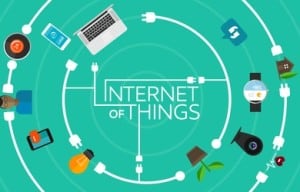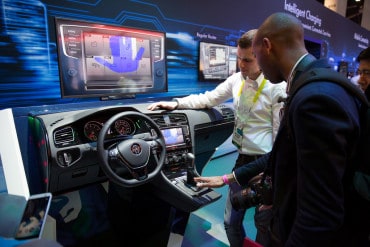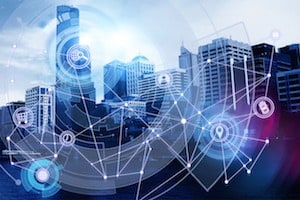
It’s not the things that are valuable in the IoT.
The Internet of Things is poised to be a tremendous game-changer for organizations across all industries. However, business leaders still haven’t quite figured out how to monetize or achieve profitability from IoT. In two new reports, McKinsey recently explored what it takes to capitalize on this emerging phenomenon.
While there has been a great deal of attention on consumer devices such as wearable fitness trackers and smart home devices, this only constitutes about 30 percent of the value of IoT, the McKinsey authors state.
“Business-to-business applications will account for nearly 70 percent of the value that we estimate will flow from IoT in the next ten years,” they state. Examples include “factories in the extended sense, such as those in manufacturing, agriculture, and even healthcare environments; work sites across mining, oil and gas, and construction; and, finally, offices.”
McKinsey sees IoT use cases in the following areas:
Optimize operations
The ability to draw insights from IoT data means greater efficiency. This is still a vast, untapped opportunity, as only about one percent of data from devices is captured and analyzed in organizations, the McKinsey analysts state.
“For example, in factories, sensors will make processes more efficient, providing a constant flow of data to optimize workflows and staffing,” according to McKinsey. Sensor data “that are used to predict when equipment is wearing down or needs repair can reduce maintenance costs by as much as 40 percent and cut unplanned downtime in half.”
Another key area is inventory management – for example, in one company, “cameras measure the number of components in bins along production lines, and an inventory-management system automatically places supply orders to refill the containers.” IoT systems “can also take the guesswork out of product development by gathering data about how products — including capital goods — function, as well as how they are actually used.”
Align the organization
With so much of the organization relying on information technology, the IT function in organizations is evolving as well – IoT requires IT leaders “to assume a transformed role that spans beyond computers, networks, mobile devices, and data centers. Instead, IT will have to join with line managers to oversee IoT systems that are essential to improve both the top and bottom lines.” IT won’t be the only part of organizations seeing transformation – CFOs, CMOs and operations executives “will have to be receptive to linking up their systems.” New types of skills will also be essential.
Introduce automation
“In some cases, the decision makers will be algorithms,” the McKinsey authors point out. “When companies need large-scale real-time action—such as optimizing the control of equipment across an entire factory—IoT systems will make decisions automatically. Managers will monitor metrics and set policy.”
Create innovative business models
Beyond efficiency, optimization, and all that good stuff is the fact that a robust IoT implementation may open up ideas for new business models. Tracking how physical assets are being used, and providing services as needs are identified. An example mentioned by McKinsey “is using IoT data and connectivity to transform the sale of industrial machinery and other goods into a service. The pioneers of this trend were jet-engine manufacturers that shifted their business model to selling thrust and ancillary services rather than physical equipment. Now these models are proliferating across industries and settings.” This means manufacturers will increasingly become service providers.
Move to online data marketplaces
In addition, data flowing from all these devices and sensors could potentially be delivered via online marketplaces, other McKinsey experts suggest. “One effective way to put IoT data to work and cash in on the growing digital bounty involves offering the information on data marketplaces to third parties.” They define these digital marketplaces as “platforms that connect providers and consumers of data sets and data streams,” with data suppliers authorizing the marketplace “to license their information on their behalf following defined terms and conditions. Consumers can play a dual role by providing data back to the marketplace.”
The marketplace, the McKinsey authors explain, act as data normalizers, “defining standard data models, formats, and attributes for all of the traded information. Once the marketplace enters the commercial stage, it becomes a data aggregator. For instance, it will enable users to combine data for a given region and offer it to service providers.”





























